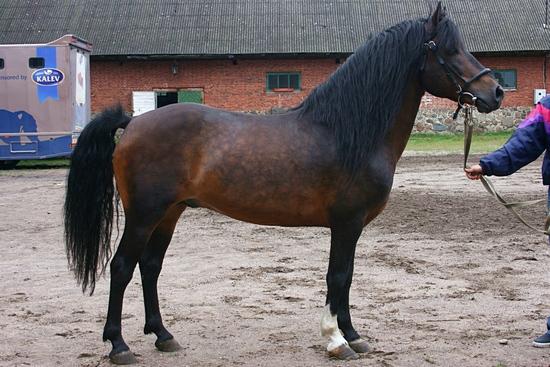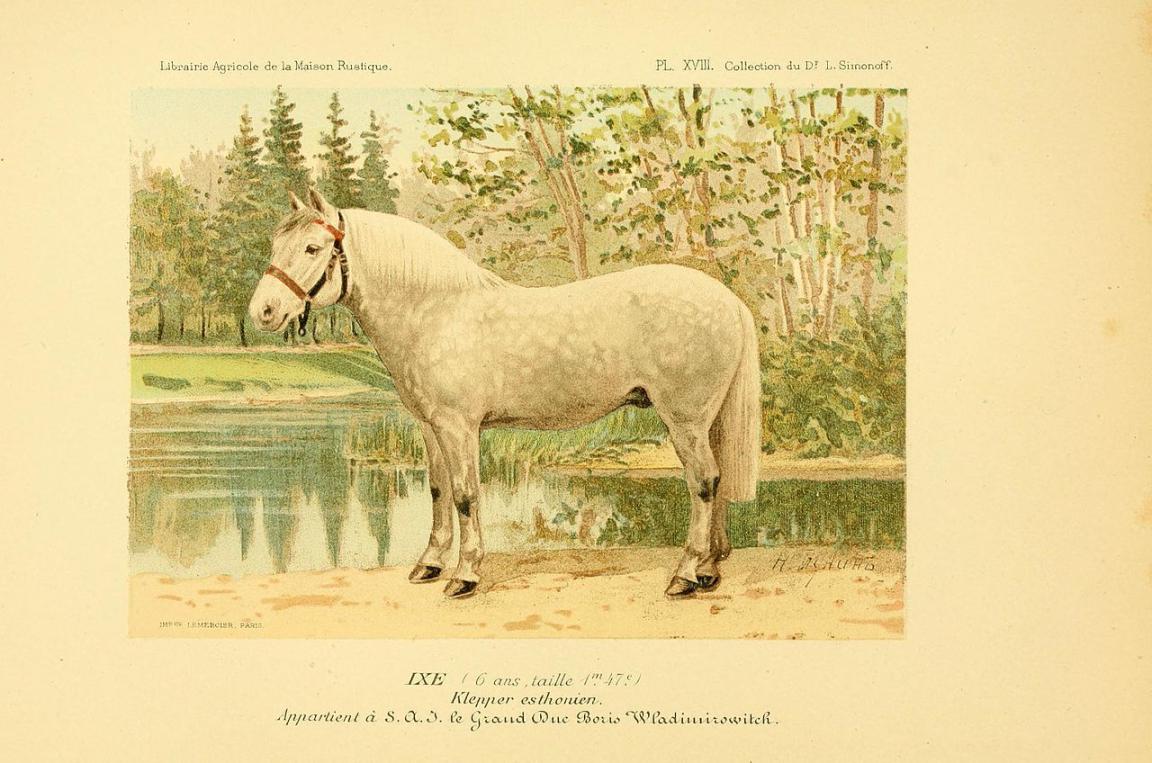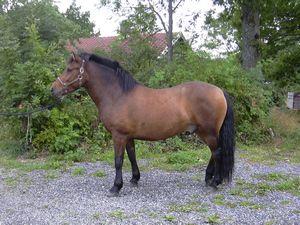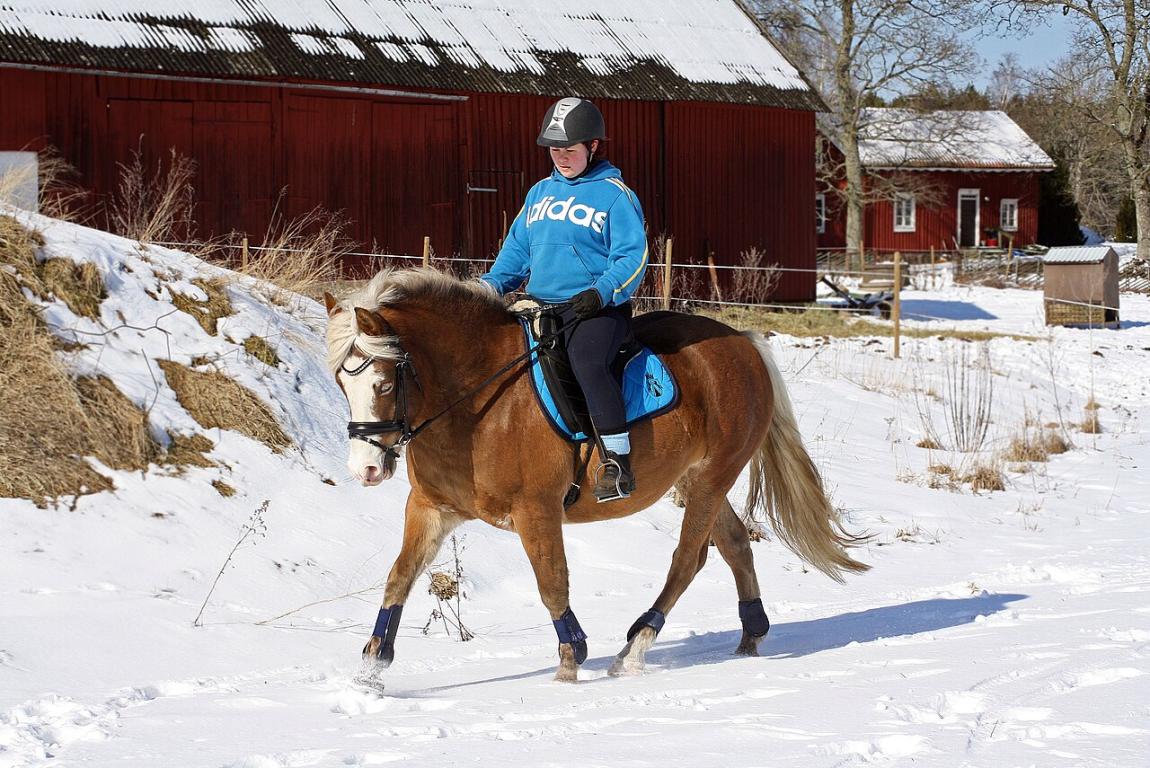
Continent: Europe
Country: Estonia
Weight: 350 – 400 kg
Height: 135 – 145 cm



The Estonian Native Horse, also known as the "Eesti hobune" in Estonian, originates from the rural regions of western Estonia, particularly the islands of Saaremaa and Hiiumaa, as well as the Baltic coastline. It descends from indigenous local horse populations with roots tracing back to the Iron Age or even earlier, according to archaeological findings.
Culturally, the Estonian horse is deeply tied to traditional rural life. For centuries, it served as the Estonian farmer’s companion, used for agricultural work, transport, and occasionally warfare. Its small size and great endurance make it well-suited to sandy soils, harsh climates, and the long northern winters.
During periods of Swedish and later Russian occupation, the breed underwent limited crossbreeding, especially with Finnish and Norwegian horses.
However, efforts to preserve the native genetic heritage began in the early 20th century, with the founding of a studbook in 1921.
Today, the Estonian Native Horse is considered a symbol of national heritage and a key part of Estonia’s agricultural identity. It is frequently showcased in folklore festivals and local breed conservation programs.
The Estonian Native Horse is mainly bred in Estonia, with a notable concentration in the following regions:
- Saaremaa Island: the historical cradle of the breed, where it is still raised in semi-wild and natural conditions.
- Hiiumaa Island: another traditional breeding zone, with semi-feral populations preserved for their rustic qualities.
- Lääne, Pärnu, and Viljandi counties: on the western and southwestern coasts, where rural breeding traditions remain strong.
- Haapsalu and surroundings: the region where the stud-book was created, with structured breeding programs developed since the early 20th century.
Specialized stud farms, under the supervision of the Estonian Native Horse Conservation Society and the Estonian Horse Breeders Society, ensure selection, registration, and preservation of the breed.
The breed is sometimes bred on a small scale in other Baltic countries (like Latvia and Finland), but its core breeding remains firmly rooted in Estonia, within a context of genetic conservation.
The Estonian Native Horse holds significant genetic value as an ancient and relatively preserved indigenous breed. It is one of the few remaining examples of a native North-European horse that has retained archaic traits and strong rusticity, despite limited crossbreeding over time.
Its genetic heritage is notable for:
- a natural resistance to diseases and harsh climatic conditions (cold, humidity, poor soils),
- high fertility and remarkable longevity,
- a rich genetic variability thanks to traditional breeding in free or semi-free conditions on the islands of Saaremaa and Hiiumaa,
- and a historical contribution to the improvement of other Baltic and Scandinavian local breeds.
The Food and Agriculture Organization (FAO) has classified the Estonian horse as a breed to be preserved, due to its relative rarity and crucial role in conserving equine genetic diversity in Northern Europe.
Today, it serves as a strategic genetic resource for research on hardiness, adaptability, and low-input breeds (requiring minimal care). Its genome is also studied in European projects on sustainable horse breeding.
The Estonian Native Horse (Eesti hobune) has a long and deep history rooted in Estonia’s rural identity. It descends from indigenous horses that lived in the Baltic regions since antiquity, with archaeological evidence dating back to the Iron Age.
Small, hardy, and enduring horses lived in a semi-wild state on Saaremaa, Hiiumaa, and the western coast of what is now Estonia. These horses were perfectly adapted to harsh climates, sandy soils, and the agricultural needs of local communities.
In the Middle Ages, Estonia came under Germanic, Swedish, and Russian influence. Some moderate crossbreeding occurred particularly with Scandinavian and Russian breeds but the native Estonian type remained largely intact.
In the 18th and 19th centuries, Tsarist authorities promoted the use of the Estonian horse for light agricultural and transport work.
In 1921, the first official studbook was opened in Haapsalu, marking a national effort to preserve this breed, then threatened by excessive crossbreeding.
Between the wars, the Estonian horse was recognized as a valuable national resource.
Under Soviet rule, the breed was maintained but often used in crossbreeding programs with heavier draft horses. However, authentic lines were preserved, especially in isolated island populations.
After Estonia’s independence in 1991, national and local initiatives revived the breed. The Estonian Native Horse Conservation Society was founded in 2000.
Today, the Estonian horse is a symbol of rural culture and part of Estonia’s national conservation priorities.
The Estonian horse is known for its balanced temperament, making it a versatile and trustworthy companion, suitable for both beginners and experienced handlers, including in rural work and animal-assisted therapy.
Its most notable traits include:
- Docility: easy to handle, cooperative, even with children or inexperienced riders.
- Calmness and steadiness: rarely nervous, tolerates stressful environments and noise well.
- Intelligence: learns quickly and responds well to gentle training.
- Willingness and diligence: despite its small size, it has a strong work ethic and good endurance.
- Independence: used to semi-feral living, it remains autonomous, yet social with humans and other horses.
The Estonian horse adapts easily to a wide range of roles: trail riding, driving, light farm work, therapeutic riding, and folk performances. Its mental resilience complements its physical durability, making it a true rustic gem.
The Estonian horse is gaining increased attention in the fields of local breed conservation, eco-tourism, and sustainable agriculture. Its future looks promising but depends on ongoing efforts to protect the breed.
- Key role in biodiversity: classified as a threatened but stable breed, it is supported by national and European conservation programs.
- Rising demand for hardy breeds: thanks to its endurance, low feeding needs, and good temperament, the Estonian horse is attractive for sustainable uses (light farm work, animal traction, natural horsemanship).
- Rural tourism and heritage promotion: the breed serves as a cultural ambassador in fairs, festivals, traditional shows, and organized treks.
- Educational and therapeutic programs: used in animal-assisted therapy and hippotherapy, especially due to its gentle nature and small size.
But challenges remain:
- Small population size: around 2,500 individuals, requiring careful genealogical monitoring to prevent inbreeding.
- Economic pressure: low profitability outside subsidized programs can limit the growth of new breeders.
- Excessive standardization: some breeding efforts risk selecting more “utilitarian” types, potentially erasing important native traits.
The future of the Estonian horse depends on integrated programs that combine conservation, touristic and educational valorization, and structured public support. It is a promising biological and agricultural resource for responsible breeding systems.
The Estonian horse is widely recognized for its exceptional hardiness and natural health, shaped by centuries of selection in harsh environments without intensive care.
It possesses:
- High resistance to common equine diseases (respiratory, dermatological, digestive),
- Strong feet and hard hooves, rarely affected by laminitis or shoeing issues—often kept barefoot,
- Cold tolerance: can live outdoors year-round, even in freezing winters,
- High fertility: mares have excellent conception and foaling rates,
- Remarkable longevity: many individuals remain active up to 25–30 years, sometimes longer.
Born on 01/01/1921
Rôle : étalon fondateur de la lignée moderne.
Particularité : largement utilisé lors de la fondation du stud-book en 1921 ; à l’origine de nombreuses lignées actuelles.